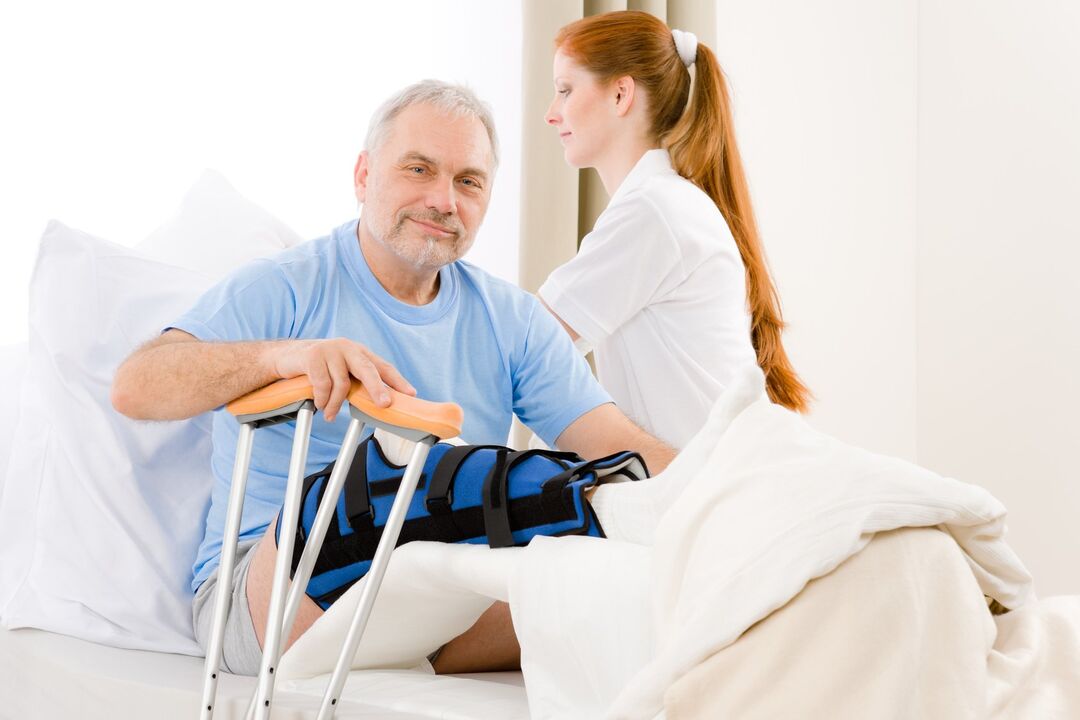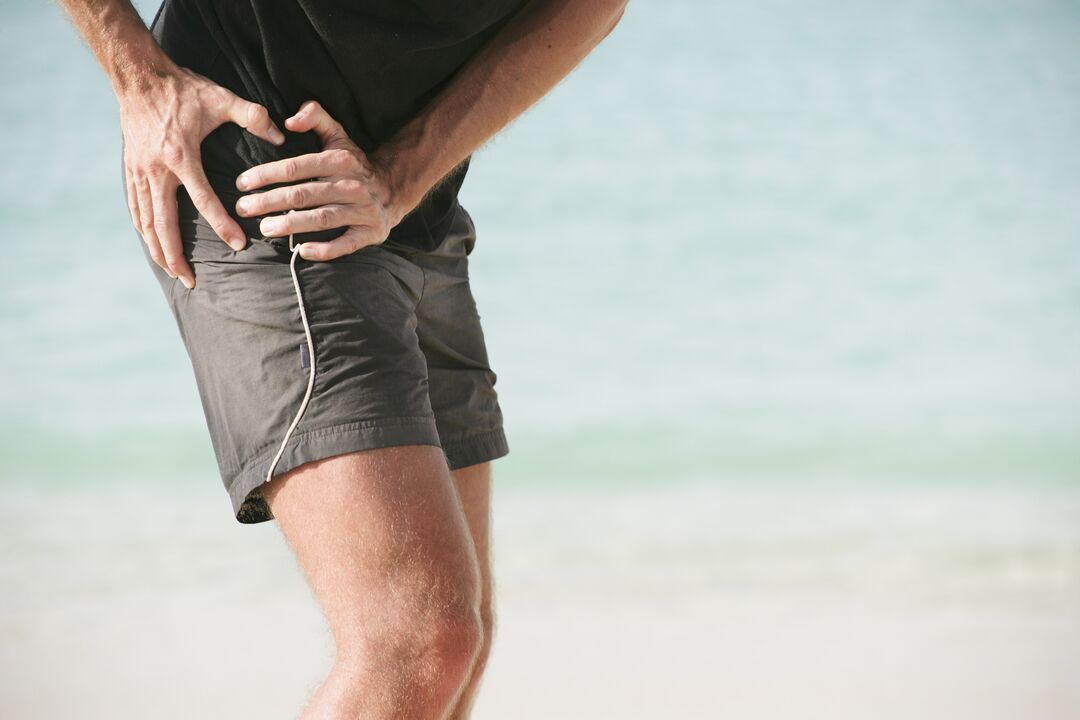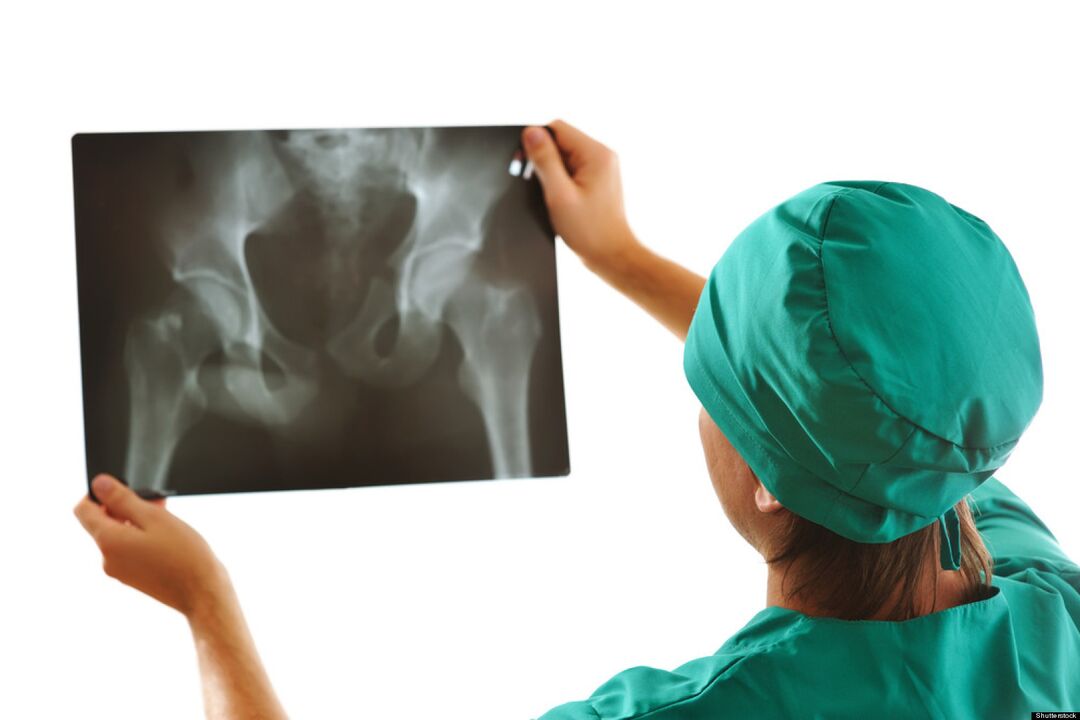
Osteoarthritis of the hip joint (ATS) is a sluggishly destructive disease. Under the influence of a number of reasons, as the disease develops, irreversible changes in the structure and properties of hyaline cartilage occur, which leads to increased pressure on the articular surfaces and their deformation or fusion. Since mechanical overload is considered one of the main causes of the development of the disease, the articulation of the hip joint is often affected by arthrosis.
Features of the anatomical structure of the hip joint
The hip joint (TC) is the junction of the pelvis and femur. This articulation makes it possible to reduce and spread the lower limbs, raise and pull the legs to the body, and perform walking movements. From birth and throughout life, people carry a high load on the hip joint.
From the side of the pelvic bone, the "acetabulum" takes part in the articulation, from the side of the femur, its epiphysis. The acetabulum has a collagen lip at the edges, which acts as a kind of seal that firmly holds the epiphysis of the femur in its cavityThe recess in the center of the acetabulum is covered with a collagen membrane and is where the ligament of the femur attaches.
The composition of the TS capsule includes tapes:
- femoral-iliac - the strongest ligament, capable of withstanding a load of more than 200 kg and preventing excessive backward arching of the hips;
- Femoral-pubic bone - is responsible for the abduction and reduction of the thigh, thereby limiting its circular movements;
- Femur - protects the vehicle from concussions, reduces the load when walking and running;
- circular (loop) - prevents dislocation and keeps the femoral head in the pelvic cavity and is the base of the articular bag.
Numerous muscle groups and tendons allow the vehicle to move about three axes:
- Longitudinal (vertical).
- Transverse (horizontal, frontal).
- Sagittal (anterior-posterior).
Joint arthrosis can occur in a healthy joint or become a continuation of existing diseases of the musculoskeletal system.
What is this disease?
The hyaline cartilage performs shock-absorbing and protective functions against damage to the joint surfaces. ATS is a disease in the process of development of which the structure of collagen cartilage fibers changes, which subsequently leads to their fragmentation and destruction. Fragments of cartilage fibers, getting into the joint cavity, can cause an inflammatory process. Bare surfaces are subject to changes in bone tissue caused by friction and increased pressure. The cartilage tissue remaining at the edges of the epiphysis grows in a compensatory manner with subsequent ossification and causes ankylosis (immobility of the bone junction). In the later stages, without adequate therapy, the patient completely loses mobility and becomes disabled. Destructive processes are provoked by various reasons.
There are the following types of osteoarthritis of the hip joint:
- Primary. Their etiology is not fully understood. Idiopathic (primary) osteoarthritis develops in a previously healthy joint. Most often it develops in the elderly.
- Secondary. It is provoked by previous diseases of the articular apparatus, congenital developmental anomalies, changes in the work of organs and systems of human vital activity.
The disease develops in one joint or affects both at the same time.
causes of the disease
Among the causes that contribute to the occurrence of the disease and its progression, the following are identified:
- Hereditary genetic predisposition to the development of the disease.
- Bone joint injuries (dislocations, fractures, sprains and tendons).
- Intolerable systematic strength and physical activity.
- overweight.
- Dysfunctions of the endocrine system (diabetes, psoriasis).
- Congenital pathologies of the structure and development of the musculoskeletal system.
- Occupational characteristics of work activity.
- Poor local circulation.
- Previous diseases caused by pathogenic flora.
- Legg-Calve-Perthes disease.
- Metabolic disorders (gout).
- physical inactivity.
- immune diseases.
These reasons cannot always cause ATS. Most often, the activation of pathological processes can be provoked by:

- increased stress and physical activity;
- constant revision;
- supercooling of the vehicle or the entire body;
- sudden lifting of heavy objects;
- hormonal imbalance;
- radiation exposure.
symptoms of the disease
Symptomatic manifestations of ATS are similar to manifestations of osteoarthritis of other joints.
The main characteristic symptoms of this disease are:
- Stiffness in the morning or after prolonged immobility.
- Restricted movement, changing gears.
- Pain, initially caused by mechanical or physical stress, later constant.
- The manifestation of creaks, crunches and clicks during sudden movements.
- Pronounced lameness in the affected limb.
- The appearance of contractures (restriction of passive movements).
- Narrowing or closure of the joint space (X-ray sign).
The severity of the signs of osteoarthritis of the hip joint depends on the degree of development of the disease and the responsiveness of the patient's body.

Stages of coxarthrosis
Depending on the clinical manifestations, 4 stages of arthrosis of the hip joint can be distinguished:
- Arthrosis of the 1st degree of the hip joint does not have pronounced pain and other manifestations. The stage is difficult to diagnose, the disease can be detected using a biochemical study of hyaline cartilage tissue and determining an insufficient amount of glycosaminoglycans. The patient feels pain in the joint at the beginning of physical activity, and rarely pain.
- Second degree osteoarthritis of the hip joint is characterized by changes in the density and elasticity of the cartilage fibers. Cracks and fractures appear. Depreciation functions are reduced. The pain intensifies, radiates to the groin region, the thinning and reduction movements of the affected limb are limited.
- At the third degree, the stratification of cartilage fibers occurs with greater intensity. Articular surfaces experience excessive pressure, foci of ischemia develop. Cartilage tissue grows at the edge of the epiphyses. The sensation of pain in the area of the damaged bone connection does not depend on the state of activity and rest. The joint "creaks" and "creaks" with every movement. The range of motion is reduced on all axes.
- The fourth degree is characterized by the exposure of the surfaces of the articular components with the formation of ulcers and depressions. The articular head of the femur is poorly fixed in the acetabulum, which leads to a violation of the comparison and separation of the articular surfaces. During this period, the patient experiences excruciating pain caused by narrowing, sometimes occlusion of the articular lumen and compression of bundles of nerve fibers and blood vessels. Movement is limited, sometimes complete.
Classification of pathological changes caused by ATS is necessary to understand the mechanism and features of the development of the disease. Determining the severity of the disease will help determine the right treatment tactics and disability (in case of a serious disease).
Possible Consequences
The progression of ATS leads not only to deformation of the head of the femur and the pelvic cavity, but also to the development of pathological processes in the functioning of the entire articular apparatus.
Pathologies resulting from complications of hip osteoarthritis:
- synovitis (inflammation of the synovial membrane of the joint);
- aseptic necrosis of the femoral head;
- joint destruction (osteonecrosis);
- Inflammation of the joint bag with a change in the amount of synovial fluid;
- ankylosis (immobility of the bone joints) partial or complete;
- Contractures (limitation of mobility and impossibility of flexion-extension of the limb).
The development of complications from ATS always leads to a deterioration in the general condition of the patient, his quality of life and the loss of unaided movement.
diagnostic methods
The diagnosis of osteoarthritis of the hip joint in the early stages is difficult. Symptomatic manifestations make themselves felt only when the epiphyses of bones and nerve fibers are involved in the pathological process.

During a medical examination in the progression stage, the following is noted:
- visual change in the contour of the joint;
- pain on palpation;
- sometimes pastosity of periarticular tissue;
- Shortening of the diseased limb.
The main role in the diagnosis of ATS is attributed to X-ray examination. As diagnostic auxiliary methods used:
- Ultrasound, magnetic resonance imaging.
- CT scan.
- Puncture of the synovial fluid (synovial fluid).
- Diagnosis with an arthroscope (microprobe).
- Clinical and biochemical laboratory tests of urine, blood.
Timely diagnosis improves the prognosis of treatment and the patient's further life.
How do I apply for a disability pass?
It is impossible to completely cure this disease. To confirm entitlement to social benefits and, after passing the examination by narrow specialists, to assign a disability group, you need to contact your doctor.

The indication for assigning disability in arthrosis of the hip joint is:
- oligoarthrosis (lesion of no more than 2 joints) TS 2 degrees;
- combined 2nd degree arthrosis of the TS and 3rd degree arthrosis of the knee joint;
- a decrease in the length of the diseased limb by more than 6 cm;
- reactively flowing auto attendant, documented.
When determining the disability group helps:
- carefully collected anamnesis;
- the conclusion of the Medical Advisory Commission (MCC);
- results of diagnostic studies;
- Passing the Medical and Social Expert Commission (MSEC).
If the decision of the commission of experts is negative, it can be appealed to higher authorities.
prevention
Preventive measures are an easy way to avoid developing this disease. Preventive measures include:
- Compliance with an active lifestyle.
- Control of body weight indicators.
- Optimization of diet and type of work and rest.
- Reduced mechanical and physical stress.
- Treatment of diseases of viral and infectious etiology.
- Prevention and prevention of injuries at home and at work.
- Regular check-ups.
Conclusion
The answer to the frequently asked question: "Is arthrosis of the hip joint curable? "" Experts give a negative answer. Destroyed cartilage tissue cannot be fully restored, just as it is impossible to fully correct the deformation and destruction of the bones trapped in the joint. Do not ignore even minor manifestations of hip arthrosis, this reduces the chances of furtherprevent development of the disease.














































